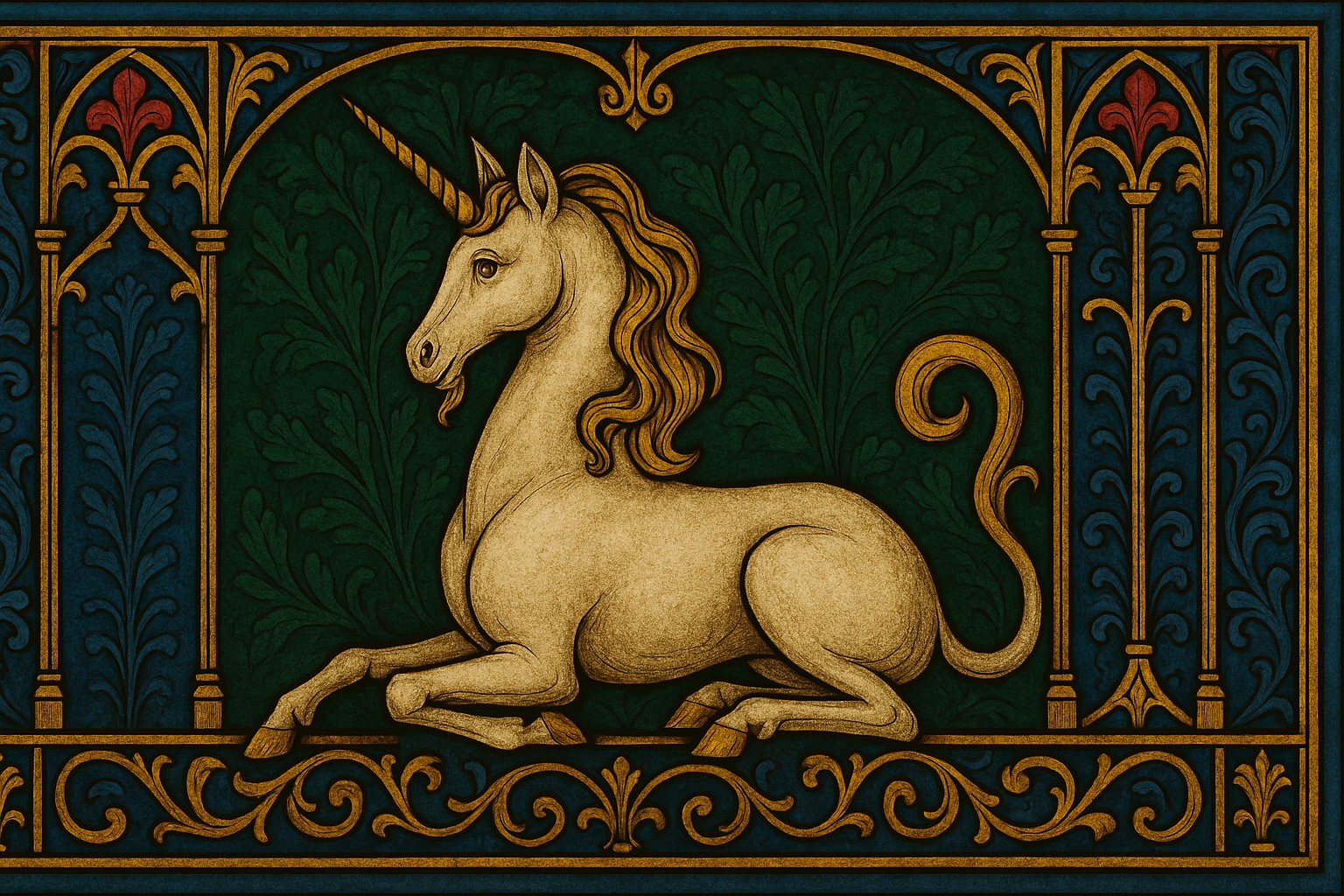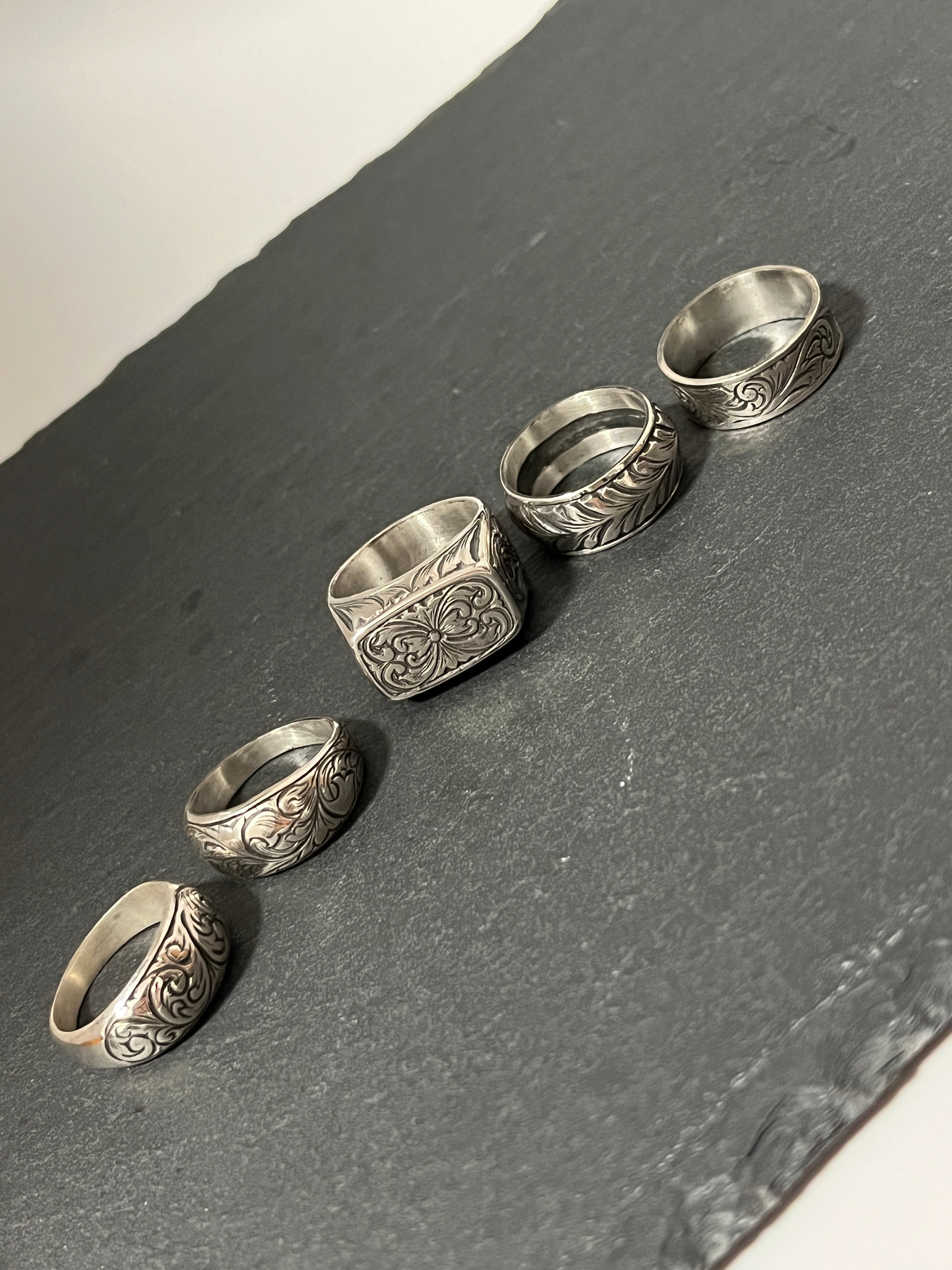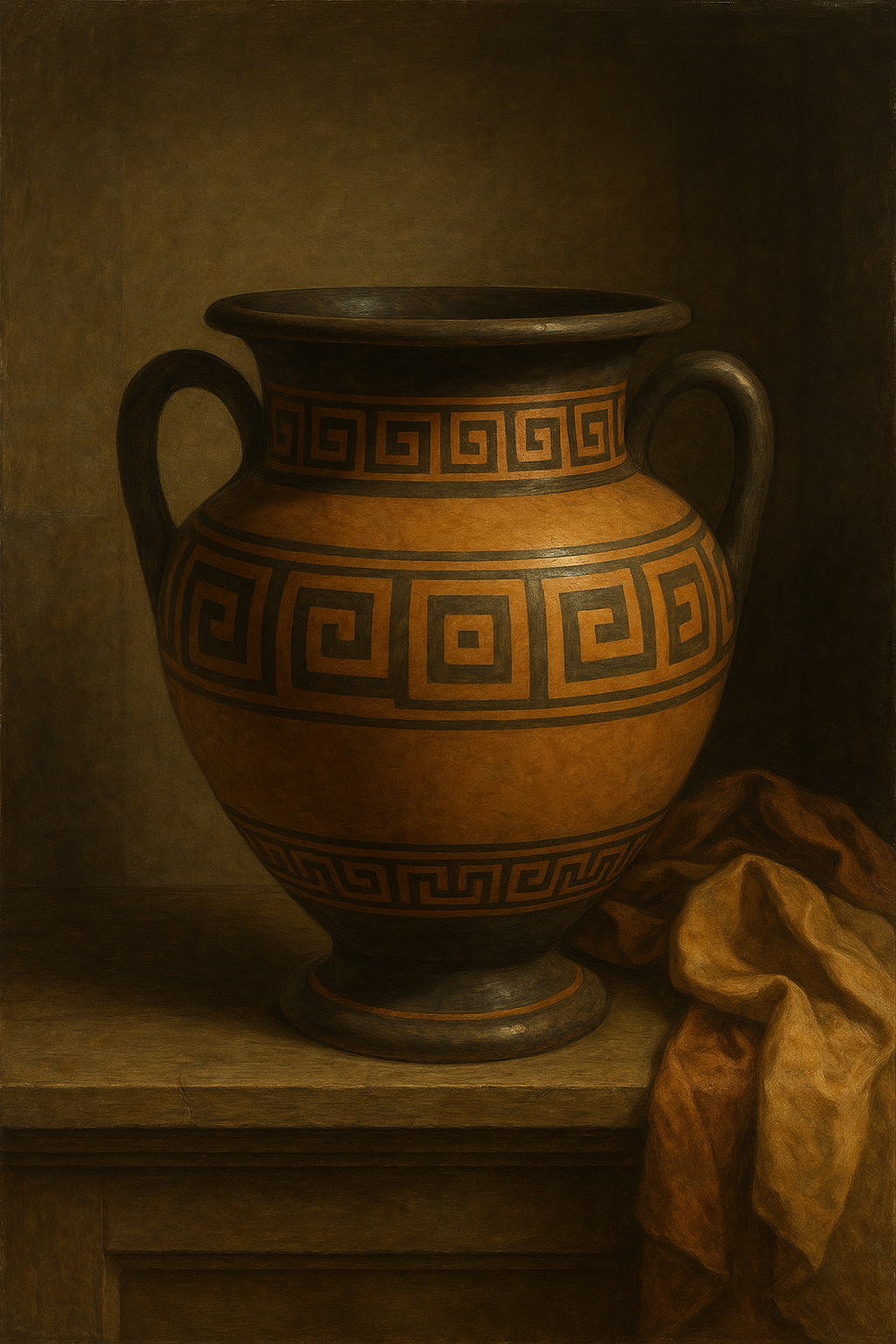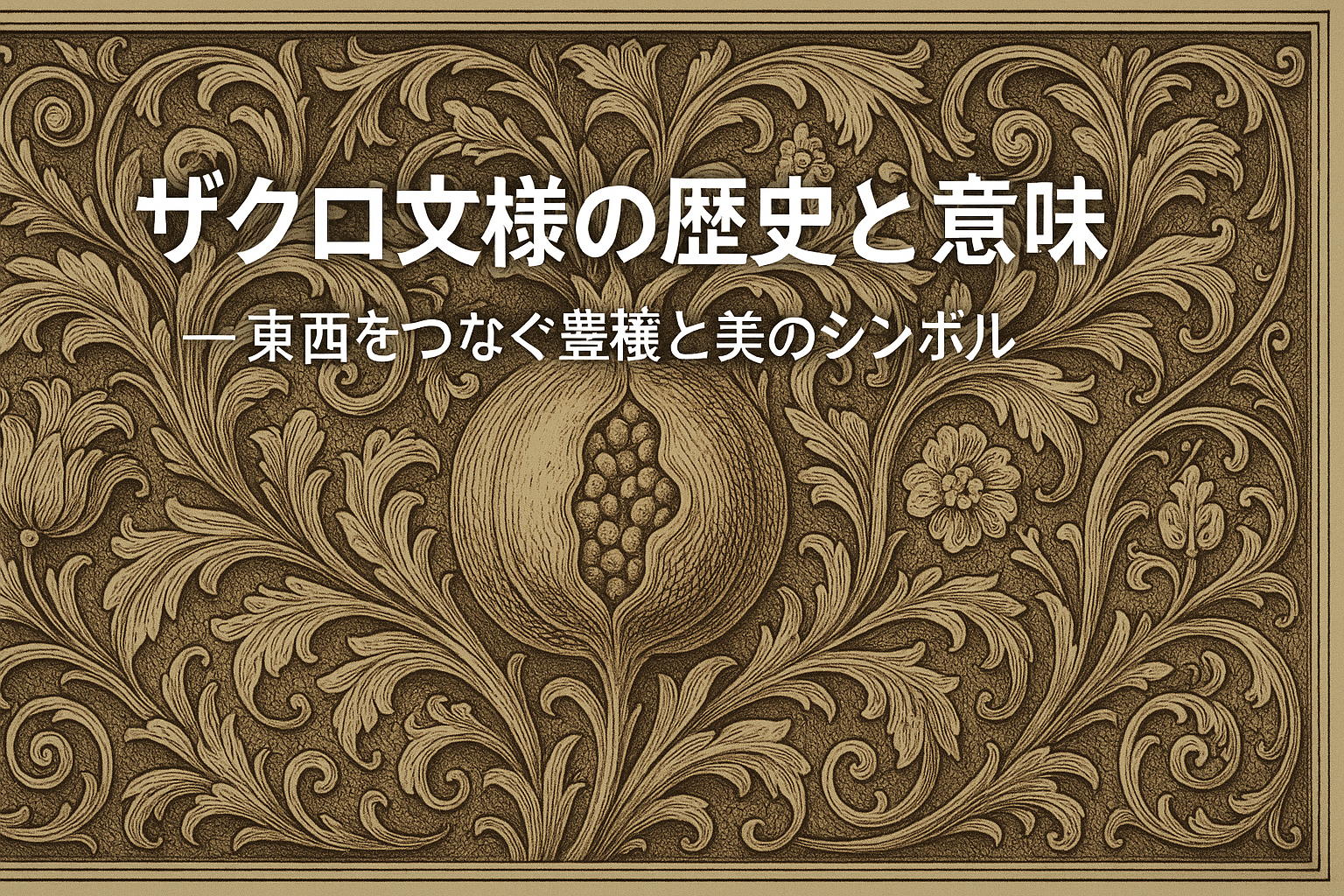
The unicorn in Gothic decoration: a mythical beast symbolizing purity and mystery
The origin of the unicorn

The unicorn is a mythical beast with a single long horn that appears in multiple Western, Middle Eastern, and Asian cultures.
Its first appearance in Western historical sources is believed to be in the description of an Indian animal by the ancient Greek naturalist Ctesias.
It then spread to Roman and medieval European literature, and its symbolism grew stronger as it became associated with Christian culture.
Unicorns in Medieval and Gothic Decor
Unicorns frequently appear in Gothic period (12th to 15th centuries) cathedral architecture, manuscript decorations, and tapestries.
In particular, the following meanings were imparted to stained glass and sculptures:
-
Purity and chastity : Unicorns are believed to be only suitable for virgins, and are therefore associated with the symbolism of the Virgin Mary.
-
Mystery and Faith : As an elusive being, it symbolizes "God's grace" and the "mystery of salvation."
-
Protection/Nobility : Depicted in the coats of arms of churches and royal families, it represents authority and nobility.
Unicorn designs were very popular as tapestry subjects in medieval Europe, and famous examples include "The Lady and the Unicorn" and "The Captive Unicorn."
I have seen it used to decorate the helmet part of armor, but because it is openwork, it seems to have been used merely to show wealth rather than as a practical decoration.
The religious significance of the unicorn and its place in church decoration
-
Symbolism of the Virgin Mary <br>In the medieval collection of animal fables called the Physiologos, unicorns are said to be able to be captured only by virgins, and the interpretation that likens this "virgin" to Mary and the unicorn to Christ became widespread.
-
A symbol of the Incarnation (Annunciation) <br>The scene of the unicorn resting its head on the maiden's lap is considered an allegorical representation of the moment when Christ was conceived as the Son of Man, and has been used in stained glass windows and illustrations in manuscripts.
Real-life examples
stained glass
-
Chartres Cathedral (France)
-
The unicorn and maiden motif can be seen on the west facade and in the stained glass windows of the Virgin Chapel.
-
-
"The Lady and the Unicorn" series from the Château de Chantilly (now the Cluny Museum of the Middle Ages)
-
This is a tapestry, not stained glass, but a typical example of a unicorn. It was produced in the monastic cultural sphere and is said to have influenced stained glass designs of the same period.
-
-
Basel Cathedral, Switzerland
-
A stained glass window from around the 14th century features an image of the Virgin Mary and a unicorn.
-
Architectural sculpture
-
Amiens Cathedral, France
-
Regensburg Cathedral, Germany
-
British monastic ruins (e.g. Fonthill Abbey)
Characteristics of how it is used
-
Location : Commonly found in the decoration of the Virgin Chapel, the small oratories in the side aisles, and the sacristy.
-
Scene : Appears as a maiden and a unicorn, or as part of the menagerie of paradise.
-
Design : In stained glass, he emphasizes clear silhouettes and angles, while in architectural sculpture he combines them with intertwining vines and biblical scenes.
Shifting symbolism
-
Early Middle Ages : Strong aspects of biblical allegory and religious symbolism.
-
After the Renaissance : Unicorns became more popular as ideals in romance and aristocratic culture, and their use spread to jewelry and secular decoration.
-
Modern to contemporary : With a resurgence in popularity in fantasy and pop culture, the image has evolved into something softer and more adorable.
The original plot where the horns were highly poisonous and could even kill elephants has now almost completely disappeared.
Unicorn design features seen in Gothic decoration
-
A single, thin, twisted horn
-
Horse-like body with sometimes goat- or deer-like legs
-
It has a flowing mane and tail, the tail of which is sometimes said to be that of a lion.
-
A solemn and poised pose (standing, not leaping)
These are combined with intricate decoration in sculptures and illuminated manuscripts, giving the space a sense of mystery.
Utilizing modern design
In modern times, the unicorn is interpreted as a motif representing "uniqueness," "rarity," and "nobility."
The way they are depicted has also become more diverse; while the beard and cloven hooves that were characteristic of goats at the time of their creation are rarely seen in modern unicorns, they are often depicted as white horses with horns.



